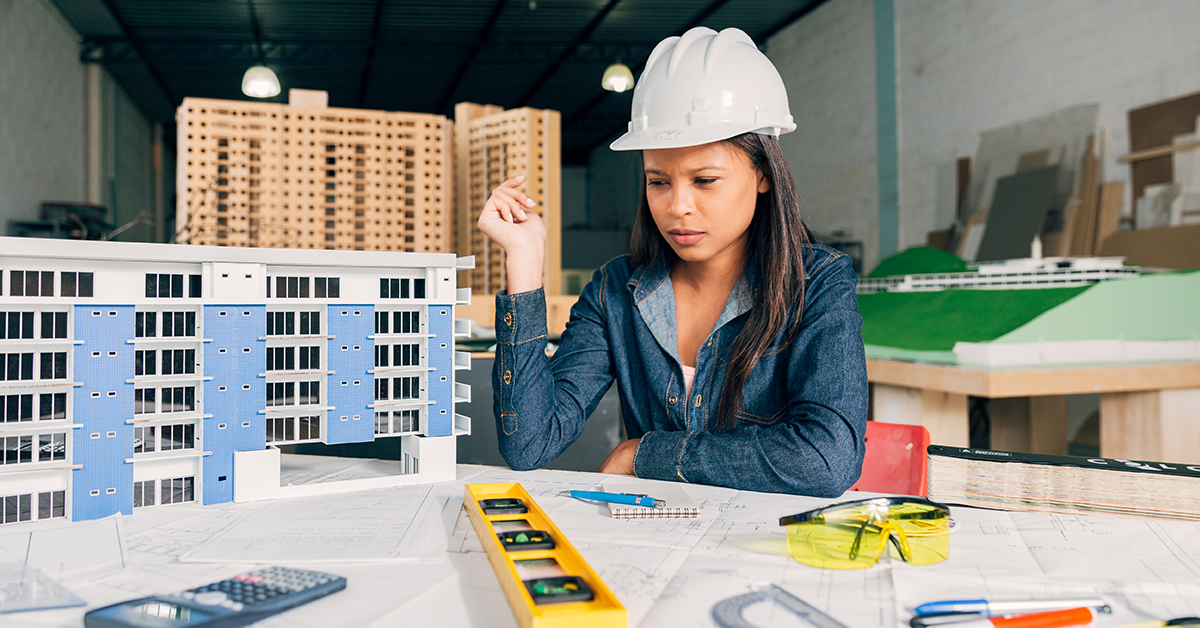Design thinking in architecture includes user-centric innovation. This occurs as a result of architects having to balance system evolution with technological advancement. By focusing just on the functions and neglecting external aspects, the architecture investigates fresh living places and new methods of living. Design thinking, on the other hand, illuminates the brainstorming process and renders holistic reasoning useless.
Once you are a licenced architect who graduates from the top M Plan colleges in India, it is mandatory that architects have design thinking and innovation that incorporate all aspects of society and business. The customer’s perception of this strategy is directly impacted. However, there are numerous design constraints in the architecture field. Therefore, if you intend to begin your career in architecture, you must possess fundamental problem-solving and design-thinking abilities. Let’s talk about it briefly.
Design thinking: what is it?
When creating a product, process, service, or business model, the design thinking process is necessary. This must have two essential, novel and useful characteristics. In order to generate solutions that have a lasting and meaningful impact, design thinking always empathises with the requirements. Simply put, people who think outside the box.
Analyzing, observing, finding the problem, brainstorming, ideation, observation, creative thinking, sketching, prototyping, testing, and evaluation are all steps in the design thinking process, which is an endless process that requires constant updating.
What are design thinking’s phases?
The fact that design thinking provides a clearly defined procedure for innovation is its primary benefit. There are internships and placement opportunities where students of top B planning colleges in India are required to submit work other than their theoretical exams. This experience let them know the design thinking in the architecture field. Although trial and error is a good way to see what works and what doesn’t, it often takes a long time, costs a lot of money, and doesn’t work in the end.
- Identify: To achieve the best results, the first step is to concentrate on locating the issue. You can accomplish this by observing and identifying the potential causes that obstruct solutions.
- Ideate: The objective is to devise novel solutions or approaches to the problem you have identified. If your assumption is correct, move on to the next process or start over to find the exact issue.
- Develop: It’s about trying out the ideas you get from the problem you found. Concentrate on the functional and nonfunctional components. As a result, you will need to prototype, test, and test your answers in multiple rounds during this step.
- Implement: This is a crucial one in which you may have all options to begin with the first step of determining whether or not you have a solution. The development phase must be extended into the implementation phase, where you must test and repeat to refine the successful solution.
As previously stated, design thinking is all about recreating and finding new solutions to the problem until the puzzle fits into it, and learning from experience is an innovation princess.
What role does architecture play in design thinking?
Because architects are in charge of the design phase , they must apply their skills to the construction phase in a sensible and appropriate manner. Therefore, it indicates that architecture enhances the design’s value and quality and investigates a variety of options in order to produce the best design.
In addition to building design, the top architecture colleges in South India allow students to learn how to use liberal thinking strategies. This creative design process emphasizes individual expression, experimentation, and critical analysis, as well as the fundamentals of technical and theoretical aspects. Because they are the vision, architects respond to urban, communal, and environmental requirements.
Guidelines for using design thinking phases to solve problems in architecture:
- Recognize the necessity of building with the users in mind: you must determine the space requirements, user perspective, and behavioral patterns.
- Define and sort the issues for which you can be ready to track down unambiguous arrangements.
- Create solutions that meet the needs of the users and contribute to the project as a whole.
- The prototype stage is crucial because it requires you to ensure that the designed assumptions and solutions yield superior insights.
- Start with scale models and work your way up to 3D development.
- If the testing does not conform to the anticipated patterns, be prepared to begin from scratch to determine how feasible the solutions are.
In the field of architecture, it’s critical to consider the consequences if the design process is given equal weight by site, labor, and finances. The stakeholders failed to notice the practical aspect of construction because the majority of people place design second.
In conclusion, buildings are part of a much larger sociocultural ecosystem, and architects have trouble convincing clients of their intuitive design procedures. On the other hand, the design thinking module used by architects from the architecture colleges in India still needs to change or advance the architectural practices of today, which appear to have obvious gaps.






